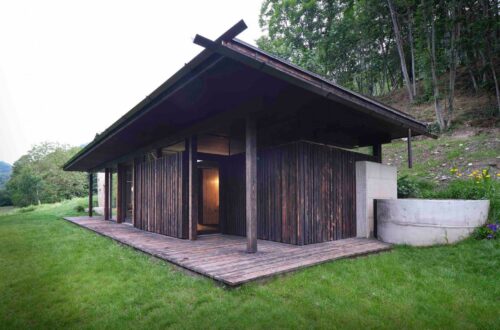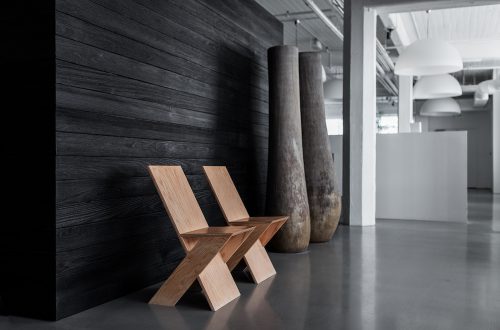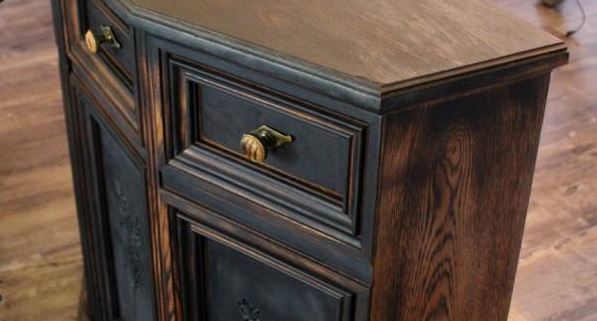
Baptism by Fire: Turning “Old” into Dramatic
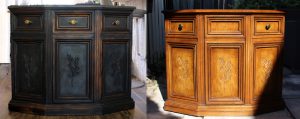 As she herself says, “This girl is on fire!” Tana MacDonald is a creative gal, running a multi-faceted business of interior design, space planning, specialty/faux painting and more in Toronto’s western suburbs. So it was that, casting about for something new to tackle, she found herself one day with an old cabinet and a new blowtorch — and was drawn like a moth to a flame.
As she herself says, “This girl is on fire!” Tana MacDonald is a creative gal, running a multi-faceted business of interior design, space planning, specialty/faux painting and more in Toronto’s western suburbs. So it was that, casting about for something new to tackle, she found herself one day with an old cabinet and a new blowtorch — and was drawn like a moth to a flame.
“I’m no pyro, but it’s mesmerizing,” MacDonald says of the charring technique she calls “risky Zen.” It’s a little scary, she says, but a very slow, steady pace ensures safety and satisfaction.
The Japanese have been charring wood — called shou sugi ban (burning Japanese cypress) — for their homes for centuries, for its dark beauty that helps blend a home into its surrounding forest, but also as a form of preservative and fire retardant. Fire changes the cellular structure of the wood and adds a layer of carbon, making it counter intuitively more fire-resistant than in its natural form, and certainly more than when, say, exterior paints or stains are applied.
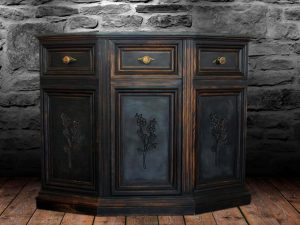 The concept has slowly been moving to North America. Early adopters, mostly architects and designers, have installed it as cottage siding, fencing, and even on the walls of restaurant interiors. It looks spectacular on modern architecture. Western red cedar works exceptionally well, experts say.
The concept has slowly been moving to North America. Early adopters, mostly architects and designers, have installed it as cottage siding, fencing, and even on the walls of restaurant interiors. It looks spectacular on modern architecture. Western red cedar works exceptionally well, experts say.
But, she says: “Note to self: the smell of burning veneer is bad, and the resulting look is bad.” (Bad for both the piece and for her eyebrows, apparently.) Her first piece, an old stereo cabinet from her basement, went up in flames. “Do not torch veneer,” she learned. “You have to use a solid wood piece.”
The type of wood a piece is made from will factor in the final appearance. A little like spray-painting, multiple layered movements over the wood helps control the depth of color; a light burning on a deeply grained softwood like cedar and pine reveals a lovely two-tone effect from burning the raised grain lines, but a longer burn on a denser wood like mahogany or oak results in a more solid look.
Another of MacDonald’s pieces, this solid wood sideboard — source at a thrift shop, for $24 — became a thing of extraordinary beauty, a dramatic change from its 1970s honey oak beginnings. The original piece was cleaned, torched, cooled with a spray of water, dried, oiled and then lightly torched again to seal it — and then given a final light buffing. (The smoky smell dissipates, MacDonald says.) She changed up the knobs, and of course torched them, too.
“There’s a beauteous, ominous presence to the piece I just love,” she says in her blog on Hometalk, and acknowledges that “people either love (charring) or have a strong aversion to it.” She’s planning to hold workshops — to pass the torch, as it were — for those who love it.
For More: Visit the National Post.



